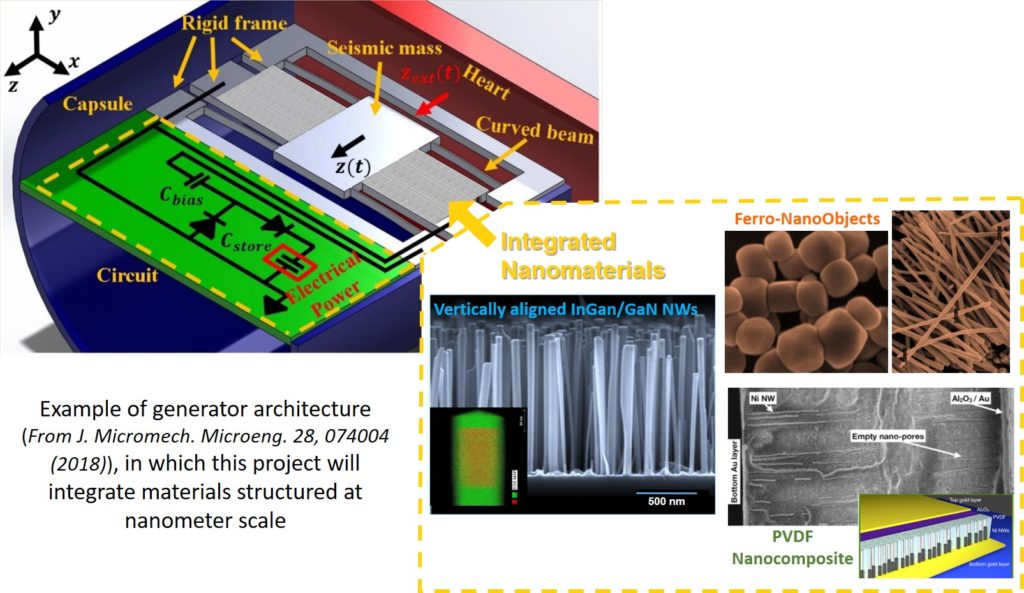

« Imagine a world where the micro-devices, such as smart sensors or medical implants, could draw the energy they need to operate from their direct environment! »
This is today the desire of a large number of companies or startups using this type of microsystems and facing the recurring problem of high cost and limited lifetime of batteries.
The autonomy of smart micro-devices is today a key worldwide challenge with strong economic and environmental benefits. The recent miniaturization of electronic devices and thus the reduction of their energy consumption to mW and even µW, combined with the progress in micro-nano-fabrication, new perspectives to develop autonomous power systems based on the renewable energy harvesting have appeared these last years. This challenge is at the basis of our project that aims to develop efficient generators integrating nanomaterials showing piezo- ferro- or tribo-electric properties (these latter being exalted due to the reduced dimensions), and able to convert mechanical energy into readily available electricity.
The development of generators able to replace batteries requires to define each building block of the autonomous system according to their operating conditions and specificities of the dedicated application, taking into account cost and durability issues. To do so, NanoVIBES proposes an original multiscale study relying on two approaches conducted in parallel:
1- Fundamental approach: fundamental challenges must be addressed, and upstream research is needed to design innovative generators able to replace existing batteries in micro-devices. This way, our project will develop the synthesis of nanostructured materials with exalted electromechanical coupling properties, in order to match the specifications of the targeted applications. Conversion properties will be measured at the nano- and macroscale, in particular using an AFM/Resiscope set-up specifically designed to collect the amount of charges generated in response to mechanical deformations.
2- Applicative approach: this is actually original since it has never been proposed in any scientific approach for this topic. The specificities of the applications will constitute the starting point to design generators integrating nanostructured materials. Hence, the nature and the amplitude of the mechanical deformations imposed by the applications will be determined and simulated. Combined with dimensional constraints and energy needs, different architectures will be defined, and further fabricated and tested in the real conditions of the application. To this aim, in close relationship with industrial partners having critical needs for self-powered devices, the project will address 3 test-vehicles that will be fabricated on the basis of technological breakthrough developed by the consortium.
The project, gathering six major laboratories of Labex NanoSaclay (C2N, MSSMAT, SPMS, GeePs, Gemac and LSI) is in essence multidisciplinary, as it covers the fields of physics, chemistry, mechanics and electronics. The strong synergy between the fundamental and the applicative approaches holds the innovative character of the project. Taking benefit from the large choice of nanomaterials with specific properties available within the consortium, NanoVIBES enables to tackle the specifications of rigid/soft/conformable/biocompatible devices, with large/small dimensions, impacted by constraints due to the operating environment (aggressive atmosphere, radiation, human body…). The project addresses important scientific challenges, and the results will bring future technological bricks, potentially leading to patents, that will enable to respond to major concerns regarding renewable energy harvesting.
